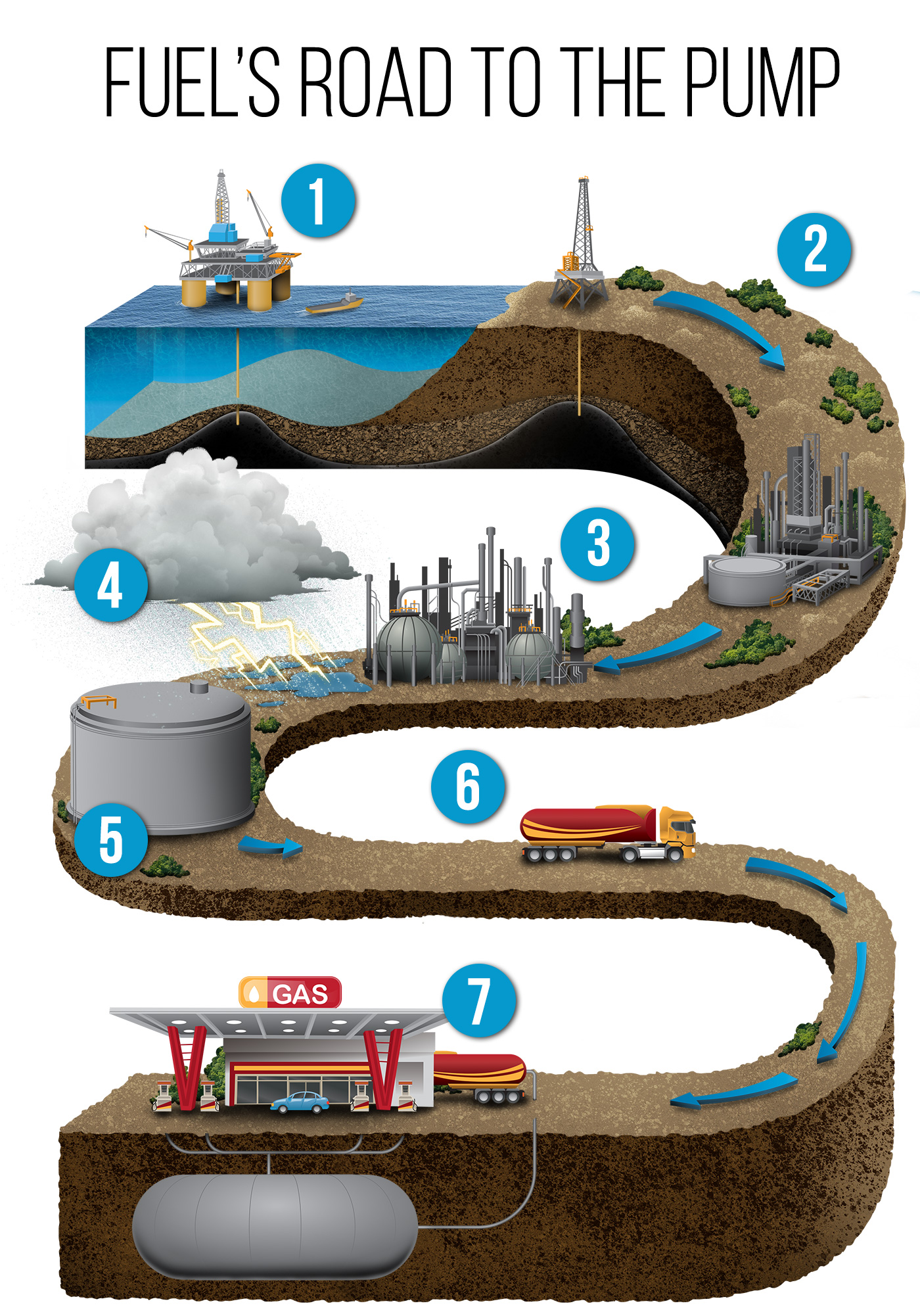From Well to Wheel: How Do Gas Stations Get Gas?
Follow crude oil on its journey to becoming gasoline and find tips to inform your choice at the pump.
What you pay at the pump—and for repairs to your car down the road—is affected by your choice of gas and its journey from oil field to fuel tank. Have you ever wondered how do gas stations get gas? Here, in seven steps, is the answer.
 Muti/Folio Art
Muti/Folio Art
- Crude oil is extracted from underground reservoirs via a well.
- At the refinery, crude oil is separated via fractional distillation into several petroleum products, one of which is raw gasoline.
- After a second refining process, purified gasoline is combined with other petroleum products to create regular and premium fuel.
Before you fuel up, check out the average gas price in your region.
See PricesIf a refinery shuts down due to severe weather or other reasons, gas prices rise in that region due to limited supplies.
Gasoline is stored at a distribution center in a huge tank. All brands of gas draw from the same tank.
Gas is pumped into tanker trucks with brand-specific additive packages blended in to protect your car’s fuel system and engine. Gas with lower-quality additives is often cheaper, but offers less protection.
Tanker trucks deliver fuel to service stations, where regular and premium gas is stored until it is pumped into vehicles.
At the pump: two things to consider
There’s no benefit to using a gas grade higher than recommended for your car, AAA research has found. However, using a lower grade might damage your engine.
Based on its study of gasoline quality, AAA recommends buying gas from a brand that meets Top Tier standards, keeping engines up to 19 times cleaner than other fuels for optimal engine performance.
Summer vs. winter: What to know about gasoline blends.
Learn More